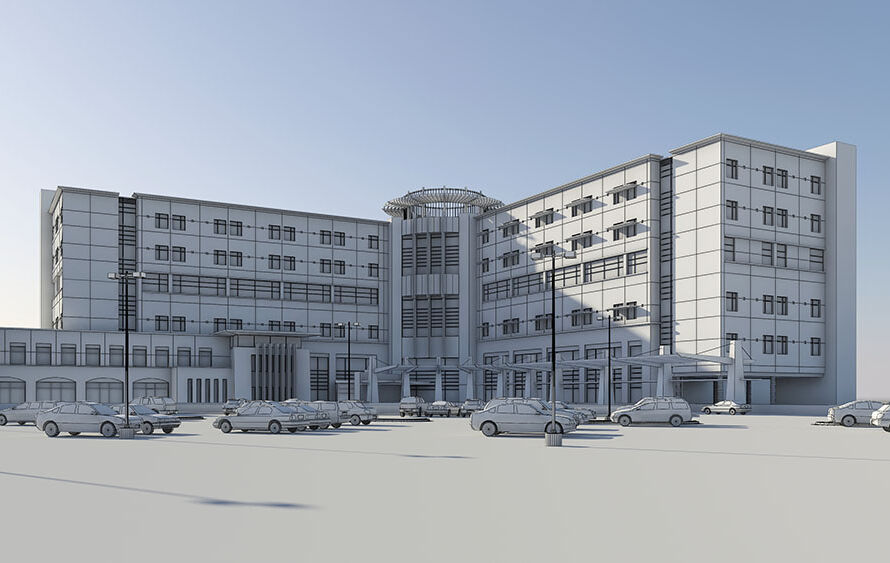You’ve seen them in the movies and you’ve probably seen them in video games too. 3D-designed characters are computer-generated images that look like they could step right out of the screen and into real life. Now, thanks to advances in 3D printing technology, we can create these characters in physical form. In this blog post, we will take a look at some of the best 3D-designed characters and review how they were created. We will also introduce you to the world of 3D design and show you how you can create your own 3D-designed character.
What is 3D printing?
3D printing, also known as additive manufacturing, is a process of making three-dimensional objects from a digital file. The creation of a 3D printed object is accomplished using additive processes, in which successive layers of material are laid down in different shapes. 3D printing is the opposite of subtractive manufacturing, which involves cutting away materials to create an object.
3D printing has been used for decades in the manufacturing industry to create prototypes and other types of objects. However, it has only recently become accessible to consumers and small businesses due to advances in technology and the fall in prices of 3D printers.
There are several benefits to 3D printing. First, it allows for the creation of highly customized products. Second, it is much faster than traditional manufacturing methods. Third, it is less expensive than traditional manufacturing methods when creating small batches of products. Finally, 3D printing reduces waste because objects can be created exactly to specifications without any excess material.
The different types of 3D printers
3D printers come in all shapes and sizes, from small desktop units to large industrial machines. The technology behind them also varies, with some using melting plastic filament and others using lasers to cure liquid resin.
There are three main types of 3D printing technology: Fused Deposition Modeling (FDM), Stereolithography (SLA), and Selective Laser Sintering (SLS). Each has its own advantages and disadvantages, which we’ll go into below.
Fused Deposition Modeling (FDM) is the most common type of 3D printing technology. It works by extruding melted plastic filament through a nozzle, layer by layer, until the desired object is built up. FDM printers are typically less expensive than other types of 3D printers, and they’re relatively easy to use. However, the objects they produce tend to have lower resolutions than those produced by SLA or SLS printers.
Stereolithography (SLA) is a type of 3D printing that uses a laser to cure liquid resin into solid layers. SLA printers are generally more expensive than FDM printers, but they produce objects with much higher resolutions. SLA is also a bit more complex to use than FDM, so it’s not as well-suited for beginners.
Selective Laser Sintering (SLS) is a type of 3D printing that uses a laser to fuse together small particles of plastic, metal.

Pros and cons of 3D printing
There are a few key reasons why 3D printing is often heralded as a game-changing technology. First, additive manufacturing (the formal name for 3D printing) allows for the creation of highly customized products. Second, it can be used to create products from a wide variety of materials, including metals, plastics, and ceramics. Finally, 3D printing is relatively quick and easy to set up, which means that it can be used for prototyping or small-scale production runs.
Of course, every technology has its drawbacks, and 3D printing is no exception. One of the biggest challenges facing 3D printers is the fact that they tend to be slower than traditional manufacturing methods. Additionally, 3D printed products can sometimes have a lower quality than those made with more traditional methods. Finally, the cost of 3D printers and materials can be prohibitive for some businesses and individuals.
How to choose a 3D printer?
When it comes to choosing a 3D printer, there are a few things you need to take into account. The first is what you want to use the printer for. Are you looking to create small models or prototypes? Or are you looking to print large objects?
The second thing to consider is the size of the object you want to print. The larger the object, the more expensive the printer will be. You also need to consider the printing resolution, which is measured in DPI or dots per inch. The higher the DPI, the finer the details on your print will be.
Finally, you need to think about what kind of materials you want to use with your printer. Different printers can use different types of filaments, so you’ll need to make sure that your chosen printer is compatible with the filament you want to use.
3D printing recipes
D printing recipes are a great way to get started with 3D printing. There are a few things you need to know before you start, but once you have the basics down it’s easy to get started.
The first thing you need to do is find a recipe that you want to try. You can find recipes online or in magazines dedicated to 3D printing. Once you have your recipe, make sure you have all the necessary supplies. You’ll need a 3D printer, filament, and an object to print.
Once you have everything you need, it’s time to start printing. Follow the instructions in your recipe and keep an eye on your progress. If everything goes well, you’ll end up with a beautiful 3D-printed object!

Alternatives to 3D printing
There are many alternatives to 3D printing, ranging from traditional manufacturing methods to more modern digital fabrication techniques. Some of the most common alternatives to 3D printing include:
- CNC Machining: CNC machining is a subtractive manufacturing process that involves using computer-controlled tools to remove material from a workpiece. This method is often used for creating complex shapes and can be used with a variety of materials, including metals, plastics, and wood.
- Additive Manufacturing: Additive manufacturing is an umbrella term that covers a range of different 3D printing technologies. Unlike subtractive methods like CNC machining, additive manufacturing builds up objects by adding layers of material. This makes it well suited for creating complex shapes or objects with intricate details.
- Injection Molding: Injection molding is another popular manufacturing method, particularly for mass production. In this process, molten plastic is injected into a mold, where it cools and hardens to take on the desired shape. Injection molding is typically used for creating plastic parts or products.
- Die Casting: Die casting is another manufacturing process that can be used for mass production. In this process, molten metal is injected into a mold under high pressure. Once the metal cools and hardens, it takes on the shape of the mold cavity. Die casting is commonly used for creating metal parts or products.
Conclusion
3D design is an incredibly powerful tool that can be used for a variety of purposes. Whether you’re looking to create a product prototype, visualise data or simply create a piece of art, 3D design can help you achieve your goals. In this article, we’ve introduced you to three of the best 3D design software programs available and given you a brief overview of their key features. We hope this has helped you get started in your journey into the world of 3D design.






